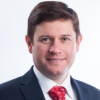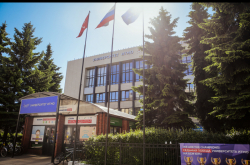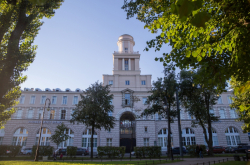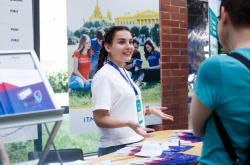The ARWU was first published in 2003. The ranking only includes universities that employ any Nobel laureates, Fields medalists, highly cited researchers, or researchers with papers published in Nature or Science. In addition, universities with a significant amount of papers indexed by Science Citation Index-Expanded (SCIE) and Social Science Citation Index (SSCI) are also included. In total, more than 1,500 universities are ranked; this year, ITMO University ranked 801-900, which means it is also included on the list of ARWU World Top 500 Candidates.
The ARWU ranking includes four key criteria: Quality of Education, defined by the number of Nobel- and Fields-winning alumni; Quality of Faculty, determined by the number of Nobel- and Fields-winning staff and the number of highly-cited researchers; Research Output, determined by the number of articles published in Nature or Science or indexed in SCIE and SSCI; the last criteria, Per Capita Performance, indicates the work efficiency of each university employee, meaning that the total score from the three above criteria is divided by the number of scientists and professors employed at the university.

All of the data used by the ranking is acquired from statistics and quantitative data. University professors are surveyed to determine the journals and awards that can be considered prestigious. As of May 2018, 347 professors from the world’s top 100 universities have been polled.
In ITMO University’s case, the key factor for its inclusion in the ranking was the presence of five publications: two in Nature and three in Science, published in 2016 and 2018. These are:
- The microbial metabolite desaminotyrosine protects from influenza through type I interferon (Science), co-authored by Ekaterina Esaulova, a programmer at the Information Technologies and Programming Faculty. The research demonstrated how intestinal microbiota affects the immune response against influenza.
- Multipotent peripheral glial cells generate neuroendocrine cells of the adrenal medulla (Science), published in Science, co-authored by Vyacheslav Dyachuk, a junior research fellow at the Department of Nanophotonics and Metamaterials. Its authors studied the emergence of chromaffin cells, responsible for the fight-or-flight response, from stem cells.
- Network science on belief system dynamics under logic constraints (Science), co-authored by Anton Proskurnikov, a senior research associate at the Fin Q Lab. In the research, the scientists described mathematical models that can be used to predict changes in public opinion.
- On-chip generation of high-dimensional entangled quantum states and their coherent control (Nature), co-authored by Roberto Morandotti, a professor at the Department of Laser Systems and Technologies. Its authors developed an optical chip capable of generating and manipulating high-dimensional entangled photons, thus improving the stability of optical signals.
- Surface patterning of nanoparticles with polymer patches (Nature), co-authored by Ekaterina Zhulina, a staff member of the International Scientific and Research Institute of Bioengineering. The article concerns the interactions between nanoparticles and specific polymer structures.

ITMO University also showed great results in regards to the number of indexed articles and its employees’ scientific performance.
“When we talk about scientific performance as indexed by the Shanghai Ranking, we must keep in mind that this concerns specifically articles in publications indexed by Web of Science. Only works of a high sophistication get the right to be published in these publications: oftentimes they are the result of years of work by international research teams. ITMO University also debuted in this year’s Shanghai Subject Rankings, where it demonstrated its unique scientific profile. These successes are directly related to ITMO’s participation in the 5-100 Russian Academic Excellence Project; this initiative created a powerful stimulus for the development of international research and the launch of a number of international research labs and centers focused on cutting-edge areas of science and education. But the most important thing is that this project made us look at ourselves in a different light and establish the goal of improving our global academic performance,” comments Ilya Kuftiryov, head of ITMO’s Rankings Research Center.
Earlier this summer, ITMO University debuted in the ARWU Subject Ranking in three separate rankings. Its best result was in the Nanosciences and Nanotechnologies ranking (201-300), followed by Materials Sciences and Technology (301-400) and Electrical and Electronic Engineering (401-500).

12 other Russian universities have entered the ARWU ranking, four of them in the top-500. These are the Kazan Federal University, National University of Science and Technology MISiS, Tomsk Federal University, Ural Federal University, Higher School of Economics, St, Petersburg Polytechnical University, and Tomsk Polytechnical University. In the top-500 are: Novosibirsk State University, Moscow Institute of Physics and Technology, St. Petersburg State University and Moscow State University.
For the 16th time in a row, the absolute leader of the Shanghai Ranking is the Harvard University, followed by Stanford University and Cambridge University. The rest of the top-10 are MIT, University of California Berkeley, Princeton University, Oxford University, California Institute of Technology, Chicago State University. In Asia, the leaders are University of Tokyo, Kyoto University, while the University of Melbourne tops the list for Oceania. The majority of universities represented in the ranking are located in the US, China and the UK.





